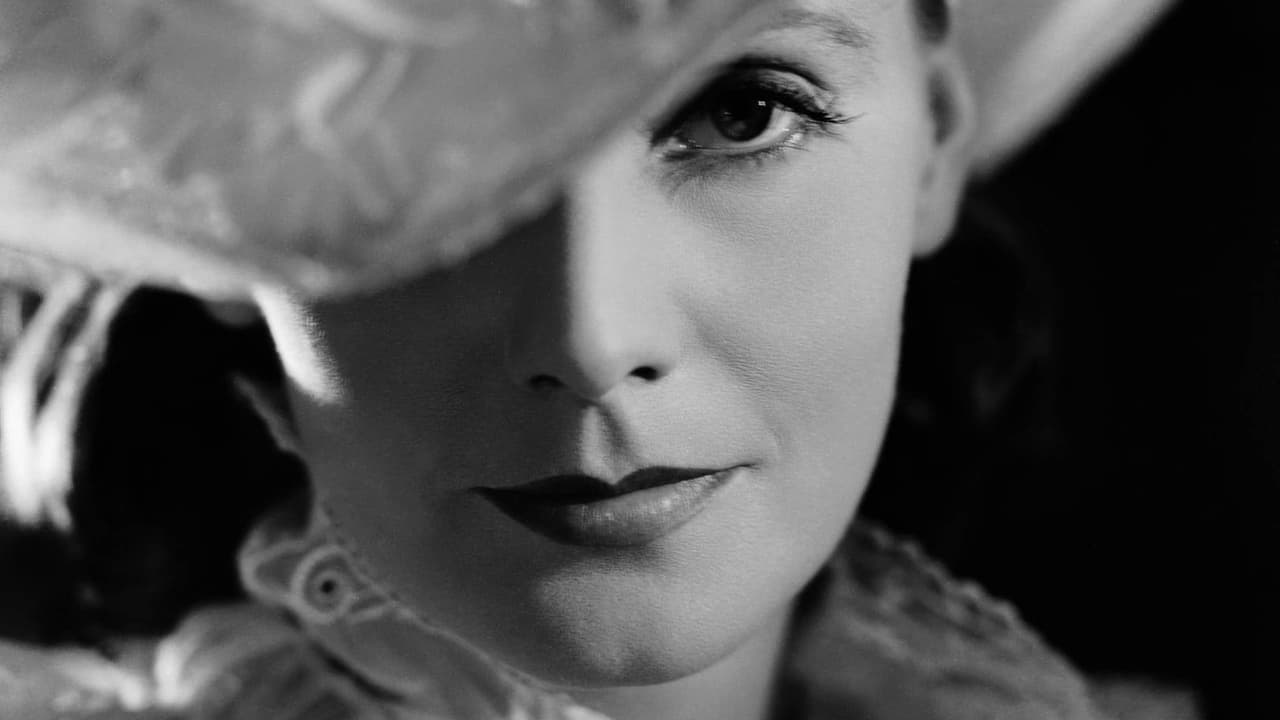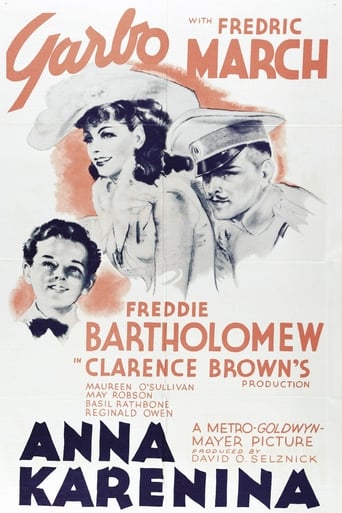

How many times have they made a movie out of Anna Karenina? Too many to count, but if you have seen a version, it's probably starred either Vivien Leigh, Helen McCrory, Sophie Marceau, Greta Garbo, or Keira Knightley, since those are the most famous adaptations. The 1935 version isn't the first Hollywood made, but you might want to check it out if you're interested in an early film that's a talkie. Greta Garbo completely lives up to her reputation of "The Face" in this lush romance; in my opinion, she's never looked prettier than she did in Anna Karenina. This version is a really great one to start with if you've never seen or read the story before, since everyone in the film is perfectly cast to how their characters are supposed to look. In the story, Anna is supposed to be breathtakingly beautiful, and she falls in love with a young, handsome Count while married to a strict, not particularly gorgeous man. Basil Rathbone plays Greta's husband, and if you've ever seen him in a movie, you know it's no stretch for him to play a convincing, and classy, villain. Fredric March is the passionate lover, and in his younger days, he could clean up very well. The incredibly adorable Freddie Bartholomew plays Greta's son, so it absolutely makes sense that he's the light of her life. Other versions don't cast endearing children or handsome lovers; this one really communicates the essence of the story.
... View MoreI found this portrayal of the classic, tragic love story far stronger than the 1948 version starring Vivien Leigh.Garbo carries a lot more gravitas in the role of a woman who is suicidally depressed in her marriage to an icy, wealthy government minister for whom nothing matters so much as reputation.What was Anna thinking when she took notorious playboy Vronsky as her lover? This perceptive soul must have sensed how her conventional spouse would respond. The scenes between Anna and her son Sergei are amazing to watch. Their affection is deeply believable. As a parent, it's hard for me to grasp how Anna could place romantic love over contact with a child so beloved. Does she really think the count will compensate -- even in Venice? AS IF!!!! Anna had the best couture, and magnificent coiffure, but they did nothing to shield her from pernicious gossip. Nor were psychologists yet around to stimulate insight and perspective. Thank God, people nowadays have access to all kinds of support and assistance!While Garbo was perfect in the lead here, and this version of the story excelled at portraying camaraderie within the military ranks, the casting of Vronsky was less satisfying. Frederic March is a significant talent, but he lacked the sex appeal to be convincing as Moscow's most eligible bachelor. (To show him massaging his conscience in the film's final frame detracted from the story's gut-wrenching finale.)And Basil Rathbone conveyed a requisite chill as Karenin but he too lacked believability. Perhaps his character evinces more depth in the book. (I think it's time I read it!) In all, this was a powerful production. It will be interesting to see how more modern versions compare.
... View MoreI recorded a broadcast of this movie off of TCM and finally got around to watching it last night. The cast has many of the big names you associate with films from this era of Hollywood and while a technically proficient movie it left a lot to be desired. Garbo doesn't do much for me and casting her in the role of Anna is a bit of a stretch as I find it hard to believe she could win the attention of a dashing member of the Royal Guards. March isn't much better as her lover, as he looks very bloated. He's a lot more dashing in Anthony Adverse. Basil Rathbone gives a very strong performance as Anna's husband and comes across as both a good father, but a distant and unsympathetic husband. While I understand this movie is based on a famous novel, it surprises me that MGM would make such a depressing movie considering what was going on in the world at this time, Hollywood was definitely more upbeat during the 1930's. At the end of this movie, I couldn't help but think I was watching one of the many anti-hero movies which came out in the late 60's and 70's. I also found it disturbing that Fredric March's character got off so easy. At the very least he could have been a broken man, but instead he's lounging around with his buddy and having a few drinks.
... View MoreTolstoy's novel Anna Karenina is a truly great one, with an interesting story and memorable characters. True, the title character can be selfish and unlikeable(though I have heard and still hear similar criticisms directed towards Scarlett O'Hara from Gone with the Wind), but she is also a moving and interesting one.I have yet to see the Vivien Leigh and the Jaqueline Bisset versions, but while it is very condensed compared to the book, I liked this film. Why do I say it is condensed? Well the film has been described as pretty much paring the plot down to the bone, something which I have to agree with. And there are subplots that are completely eliminated here. Despite me saying this, that is not really one of the reasons why I didn't give Anna Karenina a perfect score.One reason is that I feel the film is too short and a tad rushed as well. If they had slowed the pace down and made it longer, the more interesting parts of the story that were left out could have been incorporated without that much of a problem. My other problem is to do with one casting choice. Sadly that choice is Fredric March as Vronsky. Now I am not dismissing March as a bad actor, on the contrary, I thought he was outstanding in the title role of Dr Jekyll and Mr Hyde. However, his Vronsky left me cold, while he was dashing in terms of looks I found him rather stiff and ill-suited to the role, not to mention Vronsky is very Americanised here.However, Anna Karenina is gorgeous to watch. The cinematography, stunning. The scenery, breathtaking. The costumes, colourful and ravishing. Anna Karenina also has the benefit of being richly scored and the music is very pleasant and memorable and does give some dramatic weight. The direction is solid, and the script is intelligent and sophisticated. Aside from March, everyone else in the cast is very good. Greta Garbo has been considered by many as the definitive Anna Karenina, although I have to see other interpretations before I agree with or dispute this opinion, I cannot deny she is wonderful in the role. Very passionate and moving. Freddie Bartholomew is also surprisingly effective as Sergei, but the acting honours actually go to Basil Rathbone who is just superb and truly magnetic as Karenin- this role could have been clichéd but Rathbone adeptly gives it some depth and multi-layers. And I have to give a nod to the final station scene thanks to Garbo and the camera work that scene had a real dynamic sheen to it and is incredibly poignant.All in all, definitely worth watching and very solid. 8/10 Bethany Cox
... View More